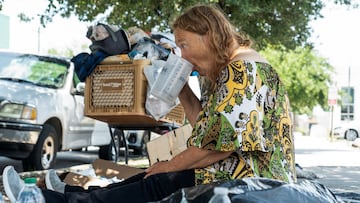Texas heat wave: What is heat exhaustion? | Symptoms and how to prevent it
A searing heatwave has raised temperatures in Texas into the triple digits. Residents are urged to take precautions to protect themselves from heat illness.

Texas is experiencing a searing heatwave that has made the state one of the hottest areas on the planet. Some cities are surpassing the 110-degree mark. The Texan Department of State Health Services is warning residents to watch out for signs of heat illness to avoid heat exhaustion and heat stroke.
What is heat exhaustion?
Heat exhaustion is a condition that develops when the body overheats due to prolonged exposure to high temperatures, sometimes combined with physical exertion. It is considered a milder form of heat-related illness compared to heatstroke but should still be taken seriously and treated promptly.
Heat exhaustion typically takes place when the body’s cooling mechanisms are overwhelmed, such as during hot weather or when engaged in strenuous activities. The primary cause is dehydration and electrolyte imbalances due to excessive sweating. Some common risk factors for heat exhaustion include high humidity, inadequate fluid intake, wearing excessive or inappropriate clothing, and being in a poorly ventilated environment.
READ ALSO: What to know about air pollution measurements
Symptoms of heat exhaustion
The Texas government warns that the elderly, young children, and those with chronic diseases are most at risk for heat exhaustion.
Symptoms of this condition may vary but often include:
- Heavy sweating
- Fatigue and weakness
- Dizziness or lightheadedness
- Nausea or vomiting
- Headaches
- Muscle cramps
- Weak but rapid heartbeat
- Cool, moist skin with goosebumps, despite the heat
In heat exhaustion, the body temperature is generally below 104 degrees. If left untreated, it can go beyond this level, and heat exhaustion can progress to heatstroke, which is a medical emergency. If you or someone else is experiencing symptoms of heat exhaustion, it is important to take immediate action to cool the body and replenish fluids.
READ ALSO: Ways to keep the air indoors clean
How to prevent heat exhaustion
To fight the heat, move to a cooler environment, drink cool water or sports drinks, rest, and apply cool damp cloths to the skin. Staying in an air-conditioned area will help you stay cool. If you don’t have air-conditioning at home, go to public areas like malls, libraries, or community centers. Go to tdem.texas.gov/cool to consult a map of local cooling centers maintained by the Texas Division of Emergency Management.
In severe cases or if symptoms worsen or persist, seek medical treatment promptly.






